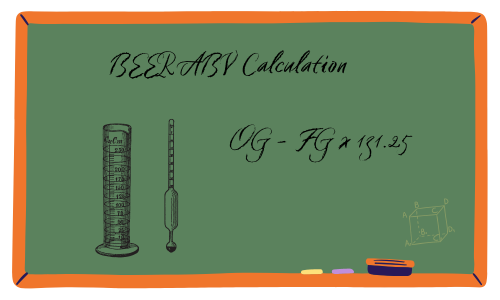
Calculating alcohol by volume (ABV) is an important step in the beer brewing process, as it allows brewers to determine the strength of their beer. There are several methods for calculating ABV, each with its own advantages and disadvantages. In this article, we’ll explore the most common methods for calculating ABV in beer brewing.
- Hydrometer Method
The hydrometer method is the most commonly used method for calculating ABV in home brewing. It involves measuring the specific gravity of the wort before and after fermentation using a hydrometer, which is a tool used to measure the density of liquids. The difference between the two readings can be used to calculate the ABV.
To use the hydrometer method, take a reading of the wort before fermentation begins, and then take another reading after fermentation has completed. The difference between the two readings can be used to calculate the ABV using the following formula:
ABV = (OG – FG) x 131.25
where OG is the original gravity and FG is the final gravity.
- Refractometer Method
Another method for calculating ABV is the refractometer method. A refractometer is a tool that measures the refractive index of a liquid, which can be used to determine the sugar content of the wort. By taking readings of the wort before and after fermentation, the difference can be used to calculate the ABV using a refractometer calculator.
- Alcohol Meter Method
The alcohol meter method involves using an alcohol meter, which is a specialized tool designed to measure the alcohol content of a liquid. The alcohol meter is floated in a sample of beer and the reading is used to calculate the ABV. This method is less commonly used in home brewing due to the cost and specialized equipment required.
- Calculating ABV from Recipe
Lastly, brewers can also estimate the ABV of their beer by calculating it from their recipe. By knowing the starting and final gravity of the beer, brewers can estimate the ABV using the following formula:
ABV = (1.05 x (OG – FG)) / FG / 0.79
where OG is the original gravity and FG is the final gravity.
In conclusion, there are several methods for calculating ABV in beer brewing, each with its own advantages and disadvantages. The hydrometer method is the most commonly used method in home brewing, while the refractometer and alcohol meter methods are less commonly used due to cost and specialized equipment requirements. Brewers can also estimate the ABV of their beer from their recipe by knowing the starting and final gravity.
